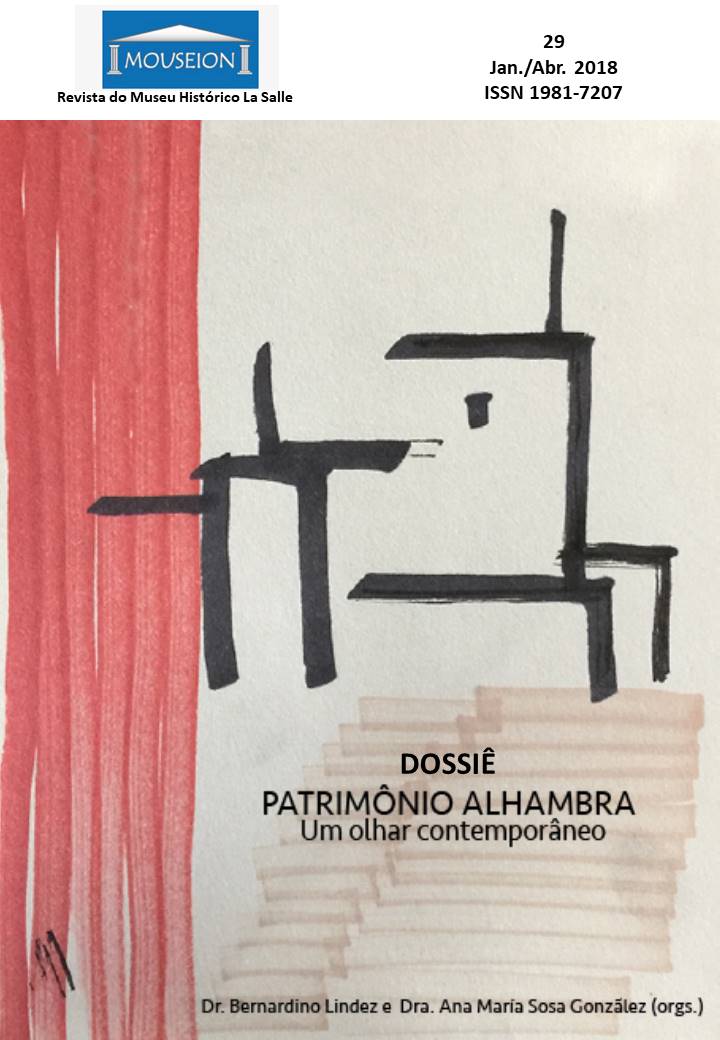The accesses to the Alhambra: impact on its reading and patrimonial management
DOI:
https://doi.org/10.18316/mouseion.v0i29.4697Keywords:
Alhambra, Access, Heritage Protection, Host of Visitors, Public VisitAbstract
The Alhambra has always maintained a particular relationship with the city of Granada, due to its configuration as a palatine city enclosed within it that preserved its inhabited character until its from a palatine city as National Monument in the 19th century. There are several aspects dealing with the Alhambra transition to a protected cultural property mainly devoted to the public visit and enjoyment, but one of them it is hardly highlighted: the effect that visitors current entrance to the monument through a non-historical access has had in the Alhambra and its environment’ global understanding. The aim of this paper is therefore to delve into the current interactions between the Monumental Complex and its context deepening in a crucial question: the evolution in the access to the Alhambra and its impact in the monument comprehension, protection and visitors’ hosting. To do so, we first analyse the changes experienced in the access to the Alhambra throughout history, the gradual closing of its historic gates and the opening of two bays in the walled enclosure that are its main current entrances. Second, we assess how these entrances prevent the understanding of the Alhambra as a fortified palatine city which was accessed in the past by several gates connected to the neighbourhoods of Granada, with which they have lost the valuable territorial relationship existing historically. And, third, we focus on the impact that the management and reception of visitors has in the current model of public visit and in the solutions that the Board of the Alhambra has implemented to improve this problematic. The joint analysis of these aspects is the basis to expose some conclusions and proposals that could be explored in the future to identify new alternatives to visit the Alhambra, able to improve its global appreciation and always conflicting relationship with Granada.
Downloads
Published
Issue
Section
License
Authors must submit their manuscripts to be published in this journal agree with the following terms:
Authors maintain the copy rights and concede to the journal the right of first publication, with the paper simultaneously licensed under the License Creative Commons attribution that permits the sharing of the paper with recognition of authorship and initial publication in this journal.
Since the articles are presented in this journal of public access, they are of free use, with their own attributions for educational and non-commercial purposes.


